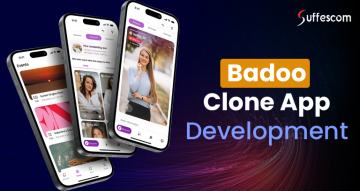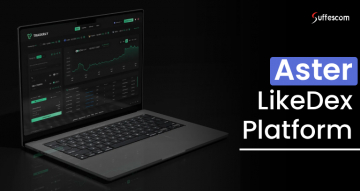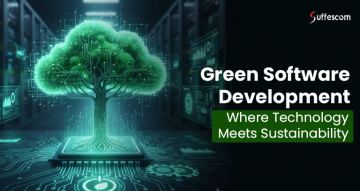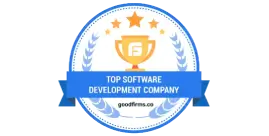Develop MVP App for Food, Grocery, Medicine & Laundry Delivery Business

In today’s fast-paced delivery market, launching a full-fledged app can be risky and expensive, especially when user needs aren't fully understood. That's where MVP (Minimum Viable Product) development comes in.
An MVP is a lean version of your app that includes only essential features to validate your idea and get real feedback. Whether you're building for food, grocery, medicine, or laundry delivery, an MVP helps test the waters, reduce costs, and scale smartly.
What Is an MVP in On-Demand App Development?
An MVP (Minimum Viable Product) is the simplest version of an application that includes only core functionalities. It helps businesses quickly test their concept in the market, gather feedback from early users, and iterate before investing heavily in full development.
Why Choose MVP Development for Delivery Businesses?
Lower Development Costs
You invest only in the must-have features, reducing upfront costs and avoiding waste on features users might not need.
Faster Time to Market
An MVP can be launched in weeks, not months, helping you reach users before competitors and gain early traction.
Real User Feedback
MVPs provide valuable data on user behavior, preferences, and pain points, helping you refine your product effectively.
MVP Use Cases by Delivery Segment
MVP Development For Food Delivery
When it comes to food delivery services, it's essential to understand your customers' preferences for different types of cuisines. What kind of food do they crave - spicy Indian curries, savory Italian pasta, or classic American burgers? Additionally, you'll want to gauge their willingness to pay delivery fees and explore innovative features like in-app ordering for dine-in restaurants. This way, customers can enjoy the convenience of ordering from their favorite eateries without ever leaving their homes.
MVP Development For Grocery Delivery
Grocery delivery has become increasingly popular, and it's crucial to validate the demand in your area. Do customers prefer scheduled deliveries, allowing them to plan their weekly grocery hauls in advance, or do they favor express options for those last-minute cravings and forgotten items? Understanding their preferences can help you tailor your service to meet their needs effectively.
MVP Development For Medicine Delivery
Explore the user-friendly journey of receiving vital medications right at your doorstep. Assess the seamless online ordering process, secure packaging protocols, and prompt delivery timelines to ensure a reliable service for handling sensitive prescriptions. Evaluate data privacy measures, customer support accessibility, and overall convenience to facilitate a stress-free experience for patients in need of their essential remedies.
MVP Development For Laundry Delivery
Businesses have to try to outdo the competition in this age of cut-throats. To stay ahead of the curve in this ever-changing business atmosphere, they must evolve and consistently improve the quality of their products. Same here; COVID-19 has become a constant companion, so developing an MVP for laundry businesses must be our top priority. A key aspect of this is eliciting feedback from our customers. There are several ways companies can address this, such as offering pick-up and drop-off options for laundry services, investigating seasonal trends in laundry, maintaining a record of what types of clothes are in style, and so on.
How to Develop a Delivery App MVP: Step-by-Step Guide
Developing an MVP app requires research, analysis, expertise, and experience in your business niche. To develop an MVP app, here are a few things to consider:
Define Your Niche and Target Audience
The first step is knowing why you want to develop an MVP. Determine the answers to these questions: What goods will you transport? Cuisine, groceries, or an exceptional offering? Who needs your service? Busy professionals, families, or other entrepreneurs seeking niche fare?
Prioritize MVP Features
Define your features now. This stage includes creating a list of entire features, planning new features, determining their workflow, and others. Businesses can research more and know the trending features to get this step done.
Ready to Build Your MVP Delivery App?
Let our expert developers help you launch a lean, market-tested solution.
Order Placement & Tracking
This stage involves creating an interface that allows users to place orders. It ensures that users easily place requests, monitor progress, and receive estimated delivery times. Secure payment gateways must also be included for effective transaction management.
Prioritize Functions
You will need to prioritize some application functions that must be tested in the market. Identify crucial features that validate your core concept. Start manually matching courses initially and automate after success.
Design & User Interface
Prioritize clean, intuitive interfaces that enable effortless navigation and foster a positive user experience. This phase includes all necessary buttons, pagination, navigation panels, and other elements that can enhance accessibility.
Development
Now, choose a development approach for your application. This requires planning the app either natively or cross-platform. Hire a professional team of developers from Suffescom to build MVP app solutions under budget.
Rectification
This stage involves rectifying the developed application. It conducts rigorous testing, using features and functionalities, and observing their workflow, as well as beta-testing and trials with real-life people.
Hosting
To increase user engagement, host the application on a global platform and utilize the integrated feedback system to gather reviews.
Advantages Of MVP App Development Solutions For Businesses
Launching a Minimum Viable Product (MVP) presents numerous advantages that can significantly contribute to the success of your app development endeavor.
Mitigate Risk
It helps minimize initial costs and risks by concentrating on core features, allowing you to test your concept before making a substantial investment in a fully-fledged application that may not resonate with users. This cost-effective approach ensures you don't expend excessive resources on building an app that lacks market demand.
Higher Customer Reach
Furthermore, an MVP facilitates an iterative development process, enabling continuous improvement based on user feedback. By actively soliciting and incorporating user input, you can refine and enhance your app step-by-step, ensuring that you're consistently delivering features that users genuinely need and value. This feedback loop is crucial for creating a product that truly meets the needs of your target audience.
Focus & Prioritization
Additionally, the MVP approach necessitates a strategic focus and prioritization of the most critical functionalities. This disciplined approach ensures that your app remains user-friendly and delivers a clear, compelling value proposition. By concentrating your efforts on the core features that provide the most significant impact, you can create a seamless and engaging user experience that communicates the benefits of your app.
Attract Potential Investors
Moreover, a well-executed MVP with promising user traction can be an invaluable asset for attracting potential investors and securing funding for further development. Investors appreciate the data-driven, risk-mitigated approach inherent in the MVP methodology. Businesses can attract investors and collaborate with other companies by demonstrating early user adoption and a validated market need.
Insights You Gain From MVP App Usage
Getting input from users is a crucial part of any product development process. It helps you understand how people use your product and their needs and preferences. There are several ways to collect user input for your Minimum Viable Product (MVP).
User Activity
Firstly, you can capture data from user actions within the app, such as the searches they perform, the options they select, the buttons they click, and any forms they fill out. This direct interaction data can reveal much about how users navigate and engage with your MVP.
Funnel Completion Rates
Another insightful metric is the funnel completion rate. This measures how many users are completing desired actions within the app, like placing an order or signing up for a service. A high drop-off rate at certain points could indicate areas of friction or confusion that need to be addressed.
In-App Surveys
In-app surveys are a straightforward way to gather qualitative feedback directly from users. Keep these surveys short and targeted, focusing on specific features or the overall user experience. Be sure to also invite suggestions for potential improvements to inform future updates.
App Store Reviews
App store reviews can provide a wealth of candid insights into how users truly feel about your MVP. Positive reviews highlight the aspects users appreciate most, while negative reviews pinpoint areas in need of improvement.
Turn Your Delivery App Idea into Reality
Start with an MVP, scale with success. Schedule a free MVP consultation now!
Latest Trends in MVP Delivery App Development (2025)
So, what are some new updates in MVP apps? Here are some technical factors that have brought a revolution in MVP apps:
Blockchain Integration
In industries where security, transparency, and traceability are paramount, integrating blockchain technology into MVPs can offer a robust solution. Blockchain's decentralized and immutable nature ensures data integrity, making it an ideal choice for applications in sectors such as finance, supply chain management, or secure data storage.
Low-Code & No-Code Platforms
These simple tools allow people with little coding know-how to build basic apps by dragging and dropping pieces. These businesses make early versions quickly and cheaply. They focus on key features and get user opinions first.
AI-Powered UI/UX
AI tools can study how users interact with the early version. They can personalize the user experience, improve user journeys, and find usability problems.
Microservices Architecture
Breaking the early version into smaller, independent, deployable services brings flexibility and scalability. This modular way makes it easier to maintain, update, and add new features as the app grows.
Progressive Web Apps (PWAs)
PWAs give an app-like experience through a web browser. Users don't need to download or install an app. This strategy can work well for MVPs and increase user engagement.
Rapid Prototyping
This process helps continuously update your MVP based on user data, which is important. This ensures your MVP stays relevant. It adapts to what users need as you improve your product.
Integration With Existing Tools And Platforms
Use existing APIs and integrations. This can make development easier. It can also enhance the user experience for your MVP.
Data Privacy And Security By Design
Make data security and transparency a priority in your MVP's data collection practices. This can build user trust as data privacy concerns are growing.
Bottom Line
This guide has taught you how to build an MVP app step-by-step. The key is an MVP, which stands for "Minimum Viable Product." An MVP is a simple app you create first. You launch it quickly to get feedback from real users. Then, you make changes based on what users say. The goal is to solve problems that matter to people.
Instead of guessing what people want, you learn directly from them. You build the app they truly need. The guide covered why MVPs are so useful. They let you test ideas cheaply before investing lots of time and money. You learn fast which ideas succeed or fail. And you avoid wasting effort on features nobody wants. MVPs put the user first from day one. So now you're ready to create your own MVP app. Launch it, learn from user feedback, then update the app over and over. That's how you build software people truly love!
FAQs
1. What is an MVP in delivery app development?
An MVP (Minimum Viable Product) is a basic version of your app with only the most essential features. It helps you test if your idea works, collect user feedback, and improve the app.
2. How much does it cost to build an MVP delivery app?
Building an MVP app typically costs between $8,000 and $25,000, depending on the app's complexity and the location of the development team.
3. How long does MVP app development take?
Creating an MVP app typically takes 4 to 8 weeks. The time depends on the number of features you want and whether the app is for iOS, Android, or both platforms.
4. Which industries are best suited for MVP delivery apps?
MVP delivery apps work well for industries such as food, grocery, medicine, and laundry, where customers expect fast and easy services.
5. Can AI and blockchain be integrated into MVPs?
Yes, you can add AI and blockchain even in early-stage MVPs. AI enhances the app's functionality for users, while blockchain improves data security and transparency.







